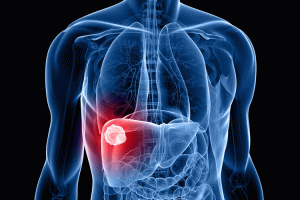
To understand what has gone wrong when cancer occurs and to create new possibilities for treatment, it is important to understand the molecular mechanisms behind what is happening at the cellular level.
New research, which is now published in the journal Molecular Cell, explains how the motor of an enzyme in DNA damage repair is switched on and off and how these processes might go awry in cancer.
Our genetic information is packaged into highly compact structures called chromatin.
The way in which chromatin is packaged regulates many vital processes that require access to the cell's genetic material.
ATP-dependent chromatin remodellers are enzymes specialised in altering the structure and packaging of chromatin.
This study, which was carried out by principal investigators Sebastian Deindl (Uppsala University) and Simon Boulton (Francis Crick Institute) together with their research teams, sheds light on the molecular mechanisms that cause such an enzyme, Amplified in Liver Cancer 1 (ALC1), to "switch on and off".
This enzyme is connected to liver and several other human cancers.
The active portion of ALC1 is a "motor" that, just like in other chromatin remodeling enzymes, can use ATP as fuel to move the enzyme along the DNA molecule and change the packaging state of chromatin.
"What is special about this enzyme is that it also possesses a specific portion, a 'macro domain' that can recognise a type of polymer that accumulates at sites where DNA has been damaged.
Thus it is involved in repairing damage to DNA," says Laura Lehmann, one of the researchers in the group.
By applying biophysical techniques to elucidate the overall shape of ALC1, combined with cell-based and live-cell imaging approaches, the researchers could map the molecular mechanisms at play in controlling the remodelling activity of the enzyme by its 'macro domain'.
The researchers show that the 'macro domain' of the chromatin remodeller ALC1 physically interacts with its ATPase motor and that this effectively shuts off the motor's activity when it is not needed.
"It can be described as a molecular brake that switches off the motor when there is no DNA damage. When damage occurs, the 'macro domain' binds to polymer chains at the damage site, which recruits the ALC1 enzyme to the site and simultaneously shifts its shape in such a way that the brake is released from the motor. Activated ALC1 could then make the damaged DNA accessible for repair processes," explains Sebastian Deindl.
This discovery is a possible explanation for the fact that several mutations reported in human cancer may compromise the "off switch" for the enzyme ALC1.
The researchers also show that when such cancer mutations are deliberately introduced in their experiments, a hyperactive, permanently "on" ATP motor is observed.
"Such uncontrolled activity of ALC1 in the absence of DNA damage is expected to have severe consequences for the cell. Ultimately, a better molecular-level understanding of the mechanisms that control ALC1 activity may in the long term open up new horizons for therapeutic intervention strategies," says Sebastian Deindl.
Source: Uppsala University
We are an independent charity and are not backed by a large company or society. We raise every penny ourselves to improve the standards of cancer care through education. You can help us continue our work to address inequalities in cancer care by making a donation.
Any donation, however small, contributes directly towards the costs of creating and sharing free oncology education.
Together we can get better outcomes for patients by tackling global inequalities in access to the results of cancer research.
Thank you for your support.